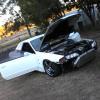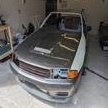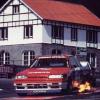R32 Gtr Spring Rates - Front To Rear Balance
Announcements
-
Similar Content
-
Latest Posts
-
STOP GOOGLING FAB9 MAKE BORG WARNER EFR KITS FOR THE NC. THEY PACKAGE AN EFR 6758. DO NOTHING ELSE. CAPS INTENTIONAL. THE BEST RESPONSIVE SETUP EXISTS FOR YOUR CAR, AND HAS BEEN PROVEN FOR QUITE SOME TIME NOW. IN B4 "BUT I WANT EVEN MORE RESPONSE, IN A SIMPLER, MORE RELIABLE PACKAGE" WHICH IS A LS.
-
By joshuaho96 · Posted
1. Factory knock sensors for now, honestly the RB26 OEM knock sensors seem ok as they're flat response instead of resonant type but they appear to be internally grounded to the block. If I do replace the sensor it would just be to get ones that are not internally grounded so a differential input can be used to reject common mode noise. Definitely plan on fixing this as a part of the tuning process. 2. Never deliberately induced knock, though I guess I could try that experiment if I really wanted to. 3. All of this is basically on a stock engine + ECU, only modification is HKS GTIII-SS turbos and a Nismo plenum. Currently I run it with the wastegate solenoid unplugged so it won't try to raise boost past wastegate pressure.







Recommended Posts
Create an account or sign in to comment
You need to be a member in order to leave a comment
Create an account
Sign up for a new account in our community. It's easy!
Register a new accountSign in
Already have an account? Sign in here.
Sign In Now